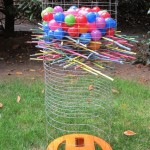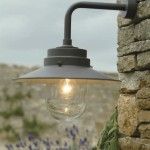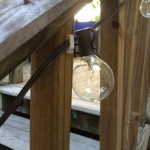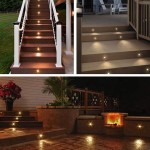Build An Outdoor Fire Pit: A Comprehensive Guide
An outdoor fire pit serves as a focal point for entertainment, warmth, and ambiance in a backyard or patio. Constructing a fire pit is a manageable project for many homeowners, provided careful planning and adherence to safety guidelines. This article outlines the steps involved in building a durable and aesthetically pleasing outdoor fire pit.
Planning and Preparation
Before commencing construction, meticulous planning is essential. The initial step entails determining the appropriate location for the fire pit. Safety considerations are paramount; the fire pit should be positioned at least 10 feet away from any structures, including houses, sheds, fences, and trees. Avoid placing the fire pit under low-hanging branches or near flammable materials. Local regulations and homeowner association rules regarding open fires must be consulted and strictly followed.
The size and shape of the fire pit are design considerations that influence material quantities and overall aesthetics. A common diameter for a circular fire pit ranges from 3 to 4 feet. Square or rectangular fire pits are alternative options, though these may require more precise cutting and fitting of materials. Mark the chosen location and desired dimensions using stakes and string, effectively outlining the perimeter of the planned fire pit.
Soil composition and drainage need to be assessed. If the soil is excessively clay-rich or poorly drained, consider excavating a shallow pit and backfilling it with gravel to promote better drainage and prevent water accumulation around the fire pit's base. Adequate drainage is crucial for the structural integrity and longevity of the fire pit.
Gathering the necessary tools and materials is a prerequisite. Essential tools include a shovel, measuring tape, level, tamper, masonry chisel, rubber mallet, safety glasses, work gloves, and a wheelbarrow (optional). Material selection depends on the desired appearance and budget. Common materials include concrete pavers, fire-resistant bricks, natural stone, and concrete blocks. A metal fire ring insert is recommended for added safety and to contain the fire within a designated area. Gravel or crushed stone is needed for the base layer.
Quantity estimation is crucial to avoid material shortages. Calculate the perimeter of the fire pit and determine the number of blocks or bricks required for each layer. Add a surplus of approximately 10% to account for potential breakage or cutting errors. Estimate the volume of gravel needed for the base layer by calculating the area of the fire pit and multiplying it by the desired depth of the gravel base.
Excavation and Base Construction
Excavation marks the physical beginning of the fire pit construction. Using the demarcated lines as a guide, excavate a shallow pit to a depth of approximately 6 to 12 inches. This depth may be adjusted depending on the desired height of the finished fire pit and the depth of the base layer.
The excavated area must be leveled meticulously. Use a level and straightedge to ensure the base is even and consistent. Unevenness at the base can lead to instability in the fire pit structure and affect its aesthetic appeal.
The gravel base is the foundation for the fire pit. Add a layer of gravel or crushed stone to the excavated pit, aiming for a depth of approximately 4 to 6 inches. This layer provides drainage and a stable foundation. Use a tamper to compact the gravel thoroughly, creating a firm and level surface. Compaction is essential to prevent settling and ensure the fire pit remains stable over time.
For enhanced stability, consider adding a layer of landscape fabric between the soil and the gravel. This fabric prevents soil from mixing with the gravel, maintaining the drainage properties of the base. Over time, soil infiltration can compromise the drainage and structural integrity of the base.
Laying the First Course of Blocks or Bricks
The first course of blocks or bricks is crucial for establishing the foundation and ensuring the fire pit is level and structurally sound. Begin by carefully placing the first block or brick at a designated starting point along the perimeter. Use a level to ensure it is perfectly horizontal.
Successive blocks or bricks should be laid adjacent to the first, maintaining consistent spacing between them. The use of mortar or construction adhesive is optional, depending on the desired aesthetic and level of permanence. Mortar provides a stronger and more permanent bond but requires more skill and effort. Adhesive offers a less permanent but more easily adjustable solution.
Continuously check the level of each block or brick as it is placed. Minor adjustments can be made by adding or removing small amounts of gravel underneath. A level base is critical to prevent the fire pit from leaning or becoming unstable.
For circular fire pits, slight gaps may occur between the blocks or bricks as the course progresses. These gaps can be filled with smaller stones or mortar, depending on the desired aesthetic. Precision in laying the first course will simplify the subsequent courses.
Building Subsequent Courses and Adding the Fire Ring
After completing the first course, subsequent courses are laid on top, typically in a staggered pattern to enhance stability. Staggering the joints, meaning that the joints between blocks or bricks in one course are offset from the joints in the course below, distributes weight more evenly and prevents vertical cracks from forming.
Maintain consistent spacing and levelness throughout the construction process. Regularly use a level to check the horizontal alignment of each course. Small deviations can accumulate and lead to significant problems in the upper courses.
Depending on the design, the courses can be laid straight or with a slight inward or outward slope. An inward slope directs heat inward, while an outward slope can provide a more decorative appearance. Choose the slope based on personal preference and functional considerations.
The fire ring insert should be placed before completing the final course of blocks or bricks. Ensure the fire ring fits snugly inside the fire pit. The uppermost course should provide a secure and stable platform for the fire ring. A properly fitted fire ring enhances safety by containing the fire and preventing embers from spreading.
If using mortar, ensure all joints are filled completely and smoothly finished. Excess mortar should be removed promptly to prevent staining the blocks or bricks. A clean and professional finish enhances the aesthetic appeal of the fire pit. Allow the mortar to cure fully before using the fire pit.
Finishing Touches and Safety Considerations
Once the structure is complete, add decorative elements to enhance the appearance of the fire pit. Options include capping stones, decorative gravel, or a surrounding patio area. Capping stones provide a finished look and offer a comfortable surface for sitting. Decorative gravel can fill the spaces between the blocks or bricks, adding texture and visual interest. A surrounding patio area creates a more inviting and functional space around the fire pit.
Before using the fire pit, conduct a thorough inspection to ensure it is structurally sound and free from hazards. Check for loose blocks or bricks, uneven surfaces, and any potential safety issues. Address any problems immediately to prevent accidents.
Always exercise caution when using the fire pit. Never leave a fire unattended and keep a fire extinguisher or water source nearby in case of emergency. Supervise children and pets closely when the fire pit is in use. Be mindful of wind conditions, as strong winds can spread embers and increase the risk of fire.
Use only seasoned firewood in the fire pit. Green or wet wood produces excessive smoke and is less efficient. Dry, seasoned wood burns cleaner and hotter. Avoid burning trash, leaves, or other debris in the fire pit, as these materials can release harmful pollutants into the air.
Regular maintenance is essential to prolong the life of the fire pit. Clean out ashes and debris regularly to prevent buildup. Inspect the structure periodically for cracks or damage and make necessary repairs promptly. Proper care and maintenance will ensure the fire pit remains a safe and enjoyable feature of the outdoor space for years to come.
:max_bytes(150000):strip_icc()/outdoor-fire-pit-ideas-00ba790bf8f14670a9e78ecdad266497.jpg?strip=all)
31 Diy Fire Pit Ideas And Plans For Your Backyard

How Do I Build A Diy Fire Pit For Natural Gas Starfire Direct

How To Build An In Ground Fire Pit The Home Youtube

Build Your Own Outdoor Fire Pit Country Farm And Home

Creative Fire Pit Designs And Diy Options

How To Build A Diy Fire Pit With Seating Area The Home

Build Your Own Outdoor Fire Pit Planitdiy

How To Build A Gas Fire Pit In 10 Steps Homeadvisor

Fire Pit Project You Can Do In One Hour

Diy Fire Pit Backyard Budget Decor Prodigal Pieces








